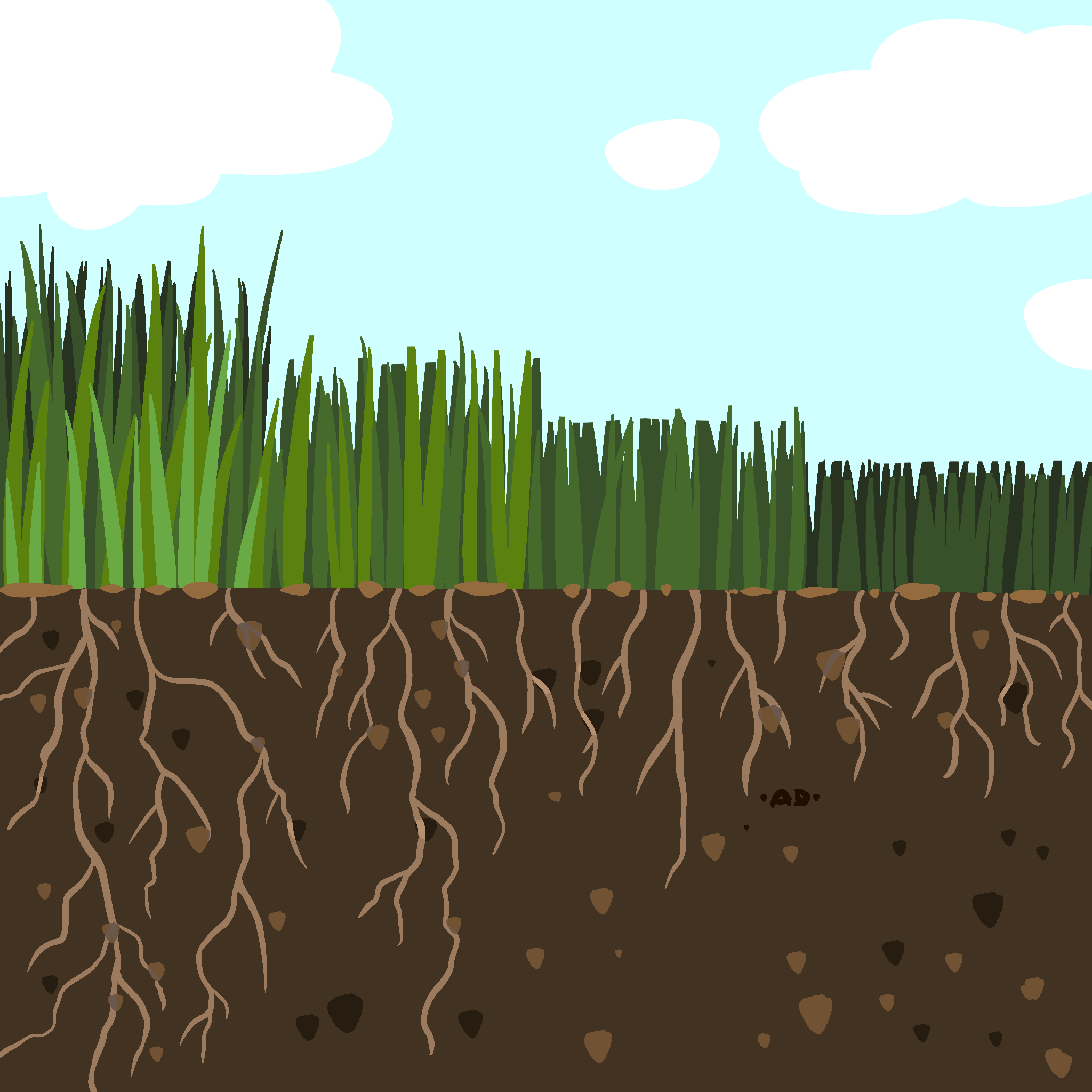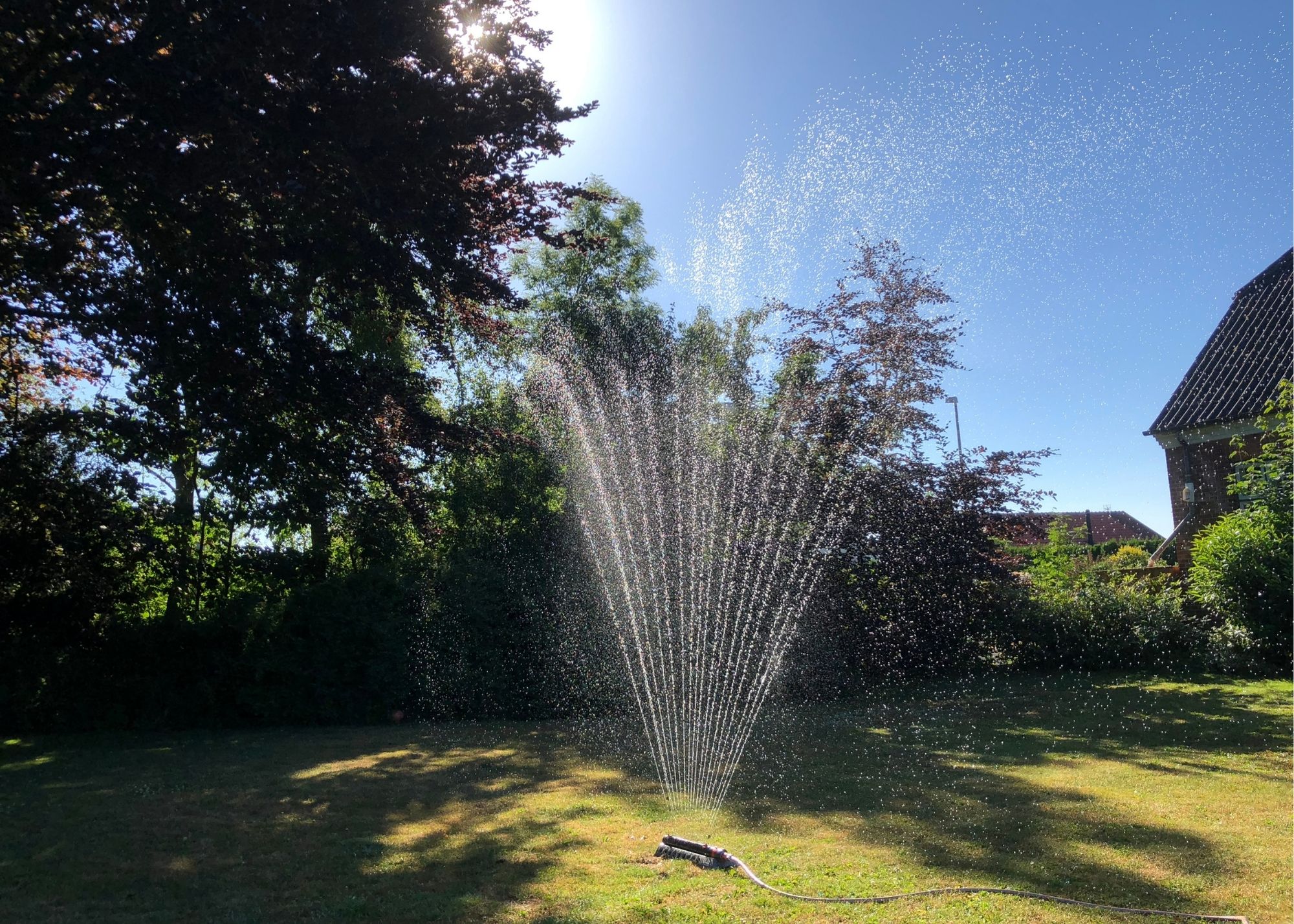Lawn Care
When it comes to our lawns, we want them to be healthy and thriving – but it turns out that we may be doing more harm than good with our lawn care practices. Following these tips will not only help your lawn survive a drought, but will help establish your lawn to better withstand the next period of water stress.
Want a happy, healthy lawn?
When it comes to our lawns, we want them to be healthy and thriving – but it turns out that we may be doing more harm than good with our lawn care practices. Following these tips will not only help your lawn survive a drought, but will help establish your lawn to better withstand the next period of water stress.
Grass in Minnesota is typically cool-season grass, like Kentucky Bluegrass, which thrives in cooler climates. Just as we feel uncomfortable when it's too hot out, our grass doesn't do well when temperatures consistently stay above 85°F. This level of high heat combined with long periods of no rainfall puts a lot of stress on our lawns.
When your grass is stressed, it reprioritizes and shuts down non-essential function above ground so it can prioritize keeping its roots alive. This process begins with abandoning shoot growth, followed by a wilted appearance, before the lawn eventually turns brown.
This is called dormancy, and it's perfectly normal for a healthy lawn. In fact, dormancy can be better for your lawn health in the long run than trying to keep it lively and green all summer.
Before drought season
The way you care for your lawn before a drought begins will influence if it will be able to survive a long period of water stress.

Don’t lay sod down in the summer.
Summer is not a great time to lay sod or plant grass seed. The high temperatures and infrequent rainfall will stress your new grass - you want to give your lawn a fighting chance to establish strong roots before drought season begins. It’s best to wait until fall or spring when conditions are more favorable to new grass.
Sharpen your mower blades.
Your lawn mower blades should be sharpened at least twice during the mowing season. Dull blades will tear at your grass, weakening its structure and resulting in water loss. A jagged end can also open your grass up to diseases. This photo, from the University of Minnesota Extension, shows the difference between grass cut by a dull blade (left) versus a sharpened blade (right).


Mow high.
Remember to never remove more than the top third of leaf blades. Cutting off too much of the blade will damage your grass. You want your grass to be about 3-4 inches tall, so you may need to raise the height settings on your lawnmower. The taller you keep your grass, the deeper their roots grow, allowing them to better take up water and nutrients. These long roots will help the grass survive periods of water stress. Taller grass also provides more shade to the soil, which helps retain moisture. Dig deeper.
Water early in the morning.
In the hot summer months, make sure you water early in the morning to minimize water loss due to evaporation. Watering later in the evening runs the risk of your lawn staying damp throughout the night, increasing the risk of disease and attracting pests.
It's best to give your lawn longer and infrequent watering sessions, as opposed to shorter and more often. This allows the water to soak deep into the soil and encourage root growth. In general, an inch a week is all the water your lawn needs. You don't want to overwater either - too much water can carry all the nutrients from the top few inches of soil down deeper than the roots can reach.

During A Drought
When the temperatures soar and there's no rain in sight, your grass is going to be doing everything it can just to stay alive. During this time, the best thing you can do to help is to leave it be.

Allow your grass to go dormant.
Your lawn will turn brown in times of drought, but don't worry - it’s essentially hibernating until conditions improve! This is a protective strategy to keep its underground roots healthy by abandoning leaf growth. Sporadic watering to try to green up a lawn again is just going to stress your lawn by bringing it in and out of dormancy. It's better to just give your lawn about a half an inch of water every 2 weeks - enough to keep the roots alive, but not enough to pull it out of dormancy and turn green again. Read more about allowing dormancy.
Don’t fertilize a dormant lawn.
It’s a futile effort to fertilize a brown lawn to try to bring it out of dormancy - the grass roots won’t take up any of the nutrients, and you may end up feeding weeds. If you do want to fertilize, save it for the Fall.
- Fertilizer tip: The 3-number sequence on your bag of fertilizer represent the amount of Nitrogen, Phosphorus, and Potassium nutrients in the fertilizer. Make sure the middle number is 0, or you may be contributing phosphorus runoff to our lakes and creeks. (Psst: it's the law!)


Stay off of your lawn.
If your lawn is dormant, stay off of it whenever possible. Any activity will just stress your lawn further. Hold off on completing any projects such as aerating your lawn, to allow the roots to retain all the moisture they can. You don't even need to mow, because a dormant lawn won't be growing any taller.
After the Drought
When the drought finally ends and your grass begins to come out of dormancy, you won't see it right away. The roots will break dormancy first, and it can take anywhere from 2-4 weeks for this activity to be reflected above ground and for your grass to start greening up.
Sweep grass clippings back onto your lawn.
When the drought is over and your lawn greens up and starts growing again, make sure you don't leave your grass clippings on sidewalks or streets, but sweep them back onto your lawn. Not only will the clippings return nutrients back to the soil, but it keeps them from being swept down storm-drains and into our lakes and creeks, where the excess nutrients can negatively impact water quality and aquatic life.


Invest in an EPA-certified WaterSense irrigation controller.
As much as 50% of the water you give your lawn might be wasted if you're not carefully tracking your irrigation methods. WaterSense irrigation controllers will do the work for you, either by connecting to your home wifi and monitoring the local weather, or through a sensor placed in the soil measuring moisture content. These Smart controllers can save the average home up to 15,000 gallons of water per year by determining when your lawn actually needs water, and when it doesn't.
See if your city offers a rebate program:
Chanhassen | Chaska | Eden Prairie | Minnetonka | Shorewood
Consider switching to a low-mow or bee lawn.
If you're struggling taking care of your turf lawn during the summers, consider the easier maintenance benefits of a low-mow or bee lawn.
Low mow lawns are made of drought-resistant grass species that require much less water, fertilizer and mowing than traditional Kentucky Bluegrass lawns.
Bee lawns, like in this photo from the University of Minnesota Bee Lab, are more resilient to environmental stressors and provide habitat for bees and other pollinators.
Alternatively, go the extra mile and convert your lawn to a Prairie Garden! We offer Water Stewardship Grants to assist with the cost.

Find your city's water regulations
Bloomington | Chanhassen | Chaska | Deephaven | Eden Prairie | Minnetonka | Shorewood
More Resources
University of Minnesota Extension Lawn Care Guide
Auditing Home Lawn Irrigation Systems